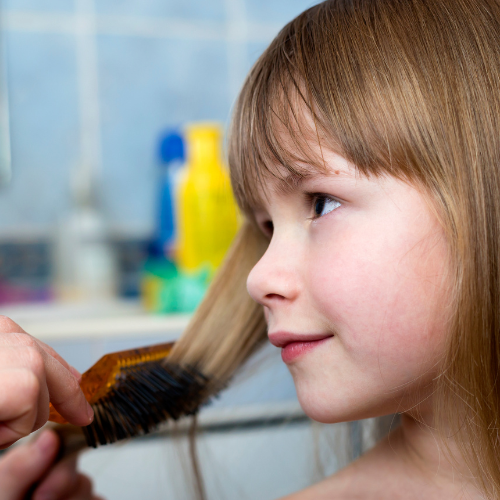Will Head Lice Eventually Leave? How Long can an Infestation Last?
Will Head Lice Eventually Leave? How Long can an Infestation Last?

The typical head lice case we see at Head Hunters is a 3-6-week infestation, but we often treat shorter cases as well. Because most people treat lice immediately upon discovering it, this often leaves clients wondering what would have happened if they did not notice the infestation or left it untreated. Since lice easily transfer on to other hosts, one might assume the lice may eventually leave their original host entirely and find a new home. If you gave it enough time, would a lice infestation leave your head?
The simple answer is NO. Individual lice may leave the head in search of a better home, but not every louse will want to leave or can leave the head. Several weeks after the initial transfer of lice, new nits are laid and at this point eggs will hatch almost every day until treated. This means that lice could go on for months, even years if left untreated. But what does a long-term case like this look like?
A case will start to become more plainly visible after 3-6 months. Nits that did not hatch have now grown out with the hair and will be further down the hair shaft. Lice also begin to run out of room to lay their nits, and you will see eggs stacked upon one another. In this time frame, you may also periodically see a louse crawl along the front hairline in plain sight. If the host has sensitive skin, the skin on the back of the neck may become red and irritated. The scalp will also have several “feeding spots” which are areas that have become red and irritated from frequent feedings. Any untreated case of 3 months or more is very contagious.
In the 6 – 12-month time frame, an infestation is plainly visible especially when the hair is wet. The hair has grown out even further and nits can be several inches from the scalp. It may be difficult to detangle the hair near the scalp as there is now an excessive buildup of glue and nits. The host could also feel drained and even become anemic when they have an infestation lasting this long, as hundreds of lice are constantly feeding on blood.
When we go beyond a 12-month infestation there are more problems to be encountered. The longer lice go on the higher the risk of infection. An infection cannot be caused by the lice directly, but if the host scratches enough to break the skin and bacteria enters the wound it can become infected. The lymph nodes can become swollen trying to fight this infection, and of course if this infection is not treated it can cause entirely new problems and illness. During this time frame, you can see lice crawling without parting the hair and the hair may appear greasy due to the buildup of nit-glue.
Cases beyond 3 months are uncommon and cases 12 months or beyond are very rare. Care must be taken during treatment as the scalp will be sensitive and it typically takes multiple treatment sessions to completely remove the infestation. All family members of the host with a long-term case should be checked and will most likely need to be treated as well.



